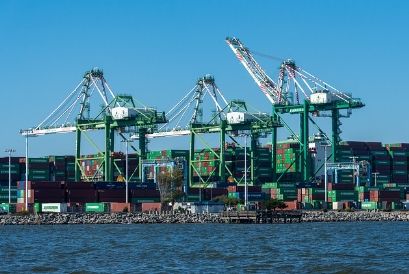What is Trade Balance and How Does It Impact a Country's Economy?
Trade balance, also known as net exports, is the difference between a country's total exports of goods and services and its total imports of goods and services over a specified period. This economic indicator is crucial for understanding the economic health of a country and its position in global trade dynamics. A positive trade balance (surplus) indicates that a country exports more than it imports, while a negative trade balance (deficit) suggests the opposite. This article explores the significance of trade balance, its effects on the economy, and the factors influencing it.

Understanding Trade Balance
Trade balance is a key component of a country's current account, which also includes other transactions like international income and direct transfers. It is a direct measure of a country's competitiveness in the global market and the relative strength of its economy.
Components of Trade Balance
1. Exports: Goods and services sold to foreign buyers that bring income into a country.
2. Imports: Goods and services purchased from abroad that result in money flowing out of the country.
Impact of Trade Balance on the Economy
• Currency Value: A surplus typically appreciates a country's currency as foreign buyers need the currency to pay for exports, whereas a deficit may lead to depreciation.
• Economic Growth: Export-driven growth can be sustainable if it is based on competitive advantages; however, excessive reliance on imports can stifle domestic industries.
• Inflation and Interest Rates: Trade surpluses can lead to lower inflation, while deficits might increase it, influencing monetary policy and interest rates.
• Employment: Strong exports can lead to job creation in export-oriented industries, whereas import dependence might undermine jobs in domestic sectors.
Factors Influencing Trade Balance
• Exchange Rates: Fluctuations in currency values can make exports cheaper or more expensive, influencing the trade balance.
• Global Economic Conditions: Economic health in key trading partners affects their ability to buy exports or supply imports.
• Domestic Economic Policies: Tariffs, subsidies, and other trade policies can affect the competitiveness of domestic goods and services.
• Technological Advantages: Superior technology and production capabilities can enhance a country's export potential.
• Resource Endowment: Natural resources can significantly impact a country's export capabilities, particularly in commodity-driven economies.
Challenges and Considerations
• Trade Imbalances: Persistent deficits can lead to accumulating national debt and vulnerability to external economic shocks.
• Protectionism: Countries might implement protective measures to correct trade imbalances, which can lead to trade wars and global economic disruptions.
• Structural Factors: Economic diversification and competitiveness are crucial for maintaining a healthy trade balance. Over-reliance on certain sectors can pose risks.
Strategies to Improve Trade Balance
• Enhancing Competitiveness: Investing in technology, innovation, and workforce skills to boost the competitiveness of exports.
• Diversifying Markets: Expanding into new international markets to reduce dependence on a single export market.
• Promoting Domestic Manufacturing: Supporting domestic industries to reduce import dependence and increase self-sufficiency.
• Negotiating Trade Agreements: Engaging in bilateral or multilateral agreements to reduce trade barriers and increase export opportunities.
Conclusion
The trade balance is a critical economic indicator that reflects a country's relative strength in the global economy. While a balanced trade scenario is ideal, surpluses and deficits each carry their own economic implications. Policymakers must carefully consider strategies to manage the trade balance to promote sustainable economic growth and stability. For businesses, understanding the dynamics of trade balance is essential for making informed decisions in international trade and investment.
Related articles

 WeChat of CBiBank
WeChat of CBiBank